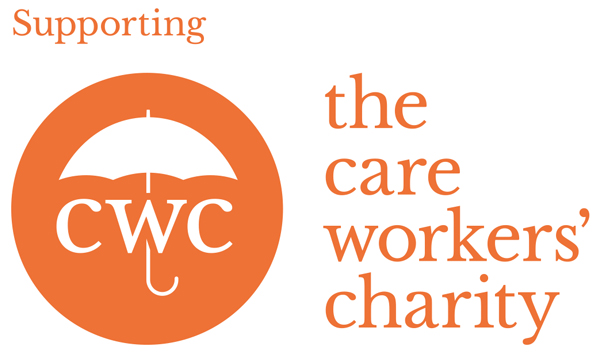
It was while attending an Alzheimers Scotland Christmas lecture that I got to thinking about our care home signage.
Professor Richard Morris, winner of The Brain Prize 2016, spoke about ‘Memory of Place’ and how studies had shown animals with significant cognitive damage would always still head towards that place of security.
This got me thinking: How are we creating that sense of security for the people who live in our care homes? We may think signage is no big deal but think about a time you have been lost even if it was only for a few minutes, the anxiety, fear and impact on our wellbeing is significant, then the sense of relief when you see that familiar street name, or a sign pointing to the terminal you are looking for.
As Dementia Nurse Consultant for Balhousie Care Group I audit and head up dementia projects, the Kings Fund environment assessment tool which we complete every 6 months within our homes and use to support an enabling environment was throwing up a common theme across the group in relation to the signage. Feedback from residents and families highlighted several points in regards signage across the organisation;
- Many reported the signs that were there were too high
- There was no good balance either too much or not enough
- Residents said I can’t find anything
- None of our homes had the same signage with some having a range of different designs in the one home.
In order to ensure that new signage met the needs of the people in our care homes I arranged participation meetings with residents and families to explore what we wanted from signs for the care home.
Visioncall partnered with us and agreed to design the signs to the specifications of what was decided at the participation meetings. The benefit of partnering with Visioncall was their expertise on the aging eye. The participation meetings worked well; we got the views of everyone connected to the individual care home.
Overwhelmingly they all selected the same design. Best practice guidelines would indicate contrasting yellow and black colours would be most efficient and each person immediately chose them as the most effective signs for reading, and seeing.
When looking at the images residents chose personalised images. One resident said: “I know that chair, I will know where I am going with that picture”. This was a feeling shared among residents, staff and families who felt it gave the signage that personalised feel.
The use of personalised images for each home fits well with Balhousie Care Group’s dementia strategy, which looks at personalised care within a personalised environment. There was a lot of discussion around black silhouette images and how confusing these could be but this was not the only hotly debated topic.
Residents also discussed how confusing having cluttered signage was and the consensus around directional signage was the wish for signs directing to toilets, lounges, dining rooms and the garden. There was lots of laughter as we got into discussions around the different names people used for the toilet but it was felt that along with the image the word toilet was the most universal.
Our final debate was about what, if any, signs the residents would like for their rooms. Often when people waken in the night and exit their rooms it is a toilet they are looking for. There may be two doors in the bedroom but nothing on these doors indicates which is the toilet. Some residents highlighted that they had a small toilet sign but that it didn’t stand out. We discussed openly the cost of putting toilet signs in every bedroom and all agreed that the expected benefit would outweigh any cost.
Our new collaboratively designed signage launches this week, in parallel with Dementia Awareness Week Scotland. It’s proof of a commitment to an enablement approach, and it promotes continence by improving wayfinding to toilets.
Commitment 8 in Scotland’s National Dementia Strategy 2017-2020 says ‘… ensure the modernisation of the care home sector takes account of the needs of people with dementia, and will consider the findings of the care inspectorates themed inspections’ The themed inspections report highlighted that ‘47% of care homes had a grade of adequate or lower for the principle of promoting continence and hygiene it also found that 59% of care homes used an enablement approach’
Grace Sloan, Senior Manager at Balhousie Wheatlands care home in Bonnybridge, said: “We are privileged at Wheatlands to be chosen as the pilot site for the new dementia friendly signage. It was good to see residents, relatives and staff members all have their say in how the signage should look and feel. Seeing the residents choose signs which were very clear, with familiar picture images, really helped to show the staff what is important to our residents.”
The signage meetings didn’t stop with the initial production and pilot home. Since then there have been several meetings with staff, families and residents with ideas of different things we have explored. The signage range has expanded to include bus stop style signage for indoors which residents were keen to look at for long corridors, or hidden rooms, so it sticks out and is visible. We also have weatherproof bus stop style signage for the garden areas to find the way back to the building or to certain areas of the garden.
The signage work will continue throughout this year and the goal is to complete all homes by end of 2019.

Yvonne Manson, award-winning Dementia Nurse Consultant for Balhousie Care Group.
References
Scotland’s National dementia strategy 2017-2020 https://www.gov.scot/publications/scotlands-national-dementia-strategy-2017-2020/
My Life, My care home https://hub.careinspectorate.com/how-we-support-improvement/care-inspectorate-programmes-and-publications/my-life-my-care-home/
Kings Fund environment assessment tool https://www.kingsfund.org.uk/sites/default/files/field/field_pdf/is-your-care-home-dementia-friendly-ehe-tool-kingsfund-mar13.pdf
Professor Richard Morris – https://www.ed.ac.uk/biomedical-sciences/news/archives/2016/prof-richard-morris-awarded-top-research-prize









